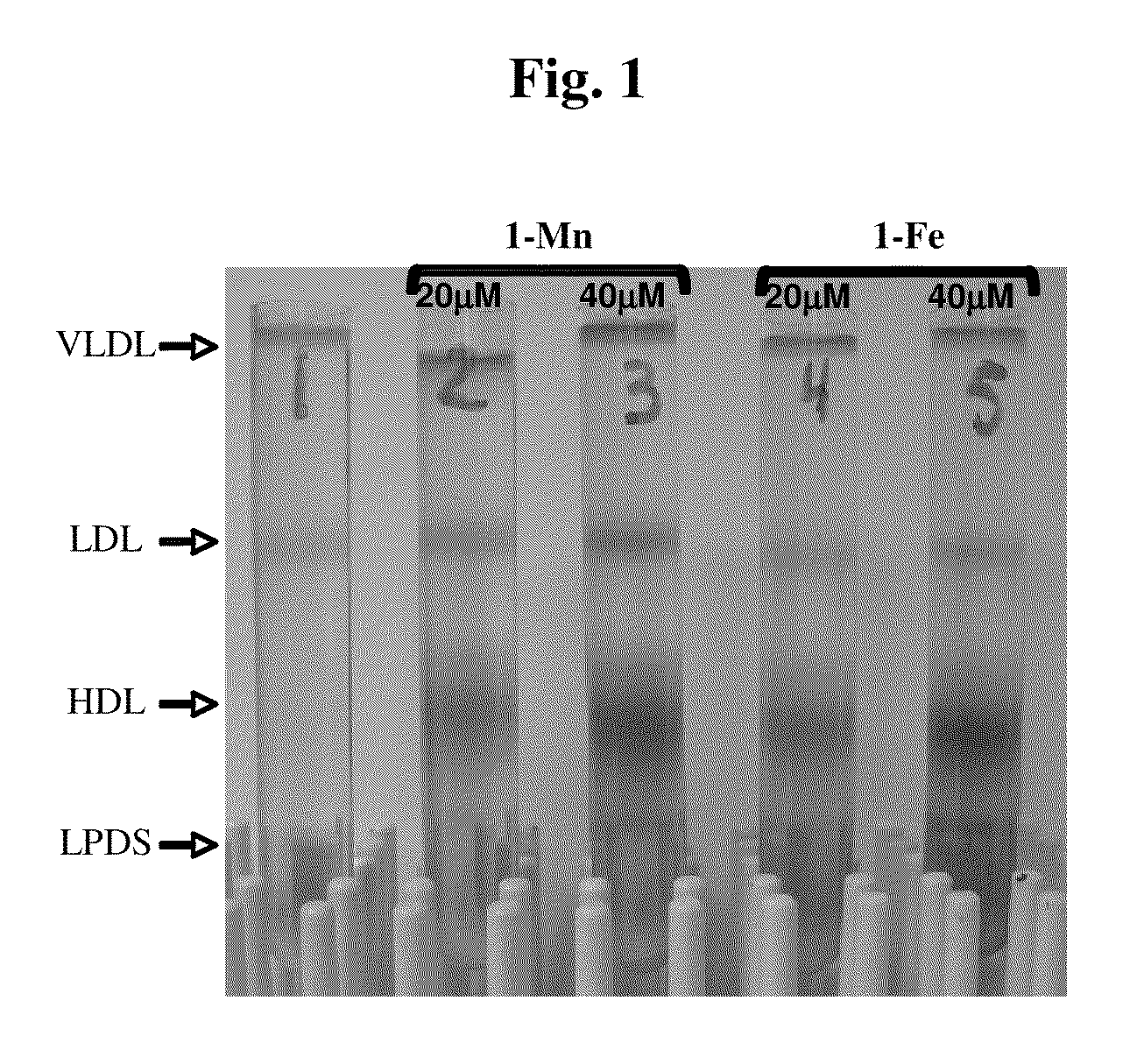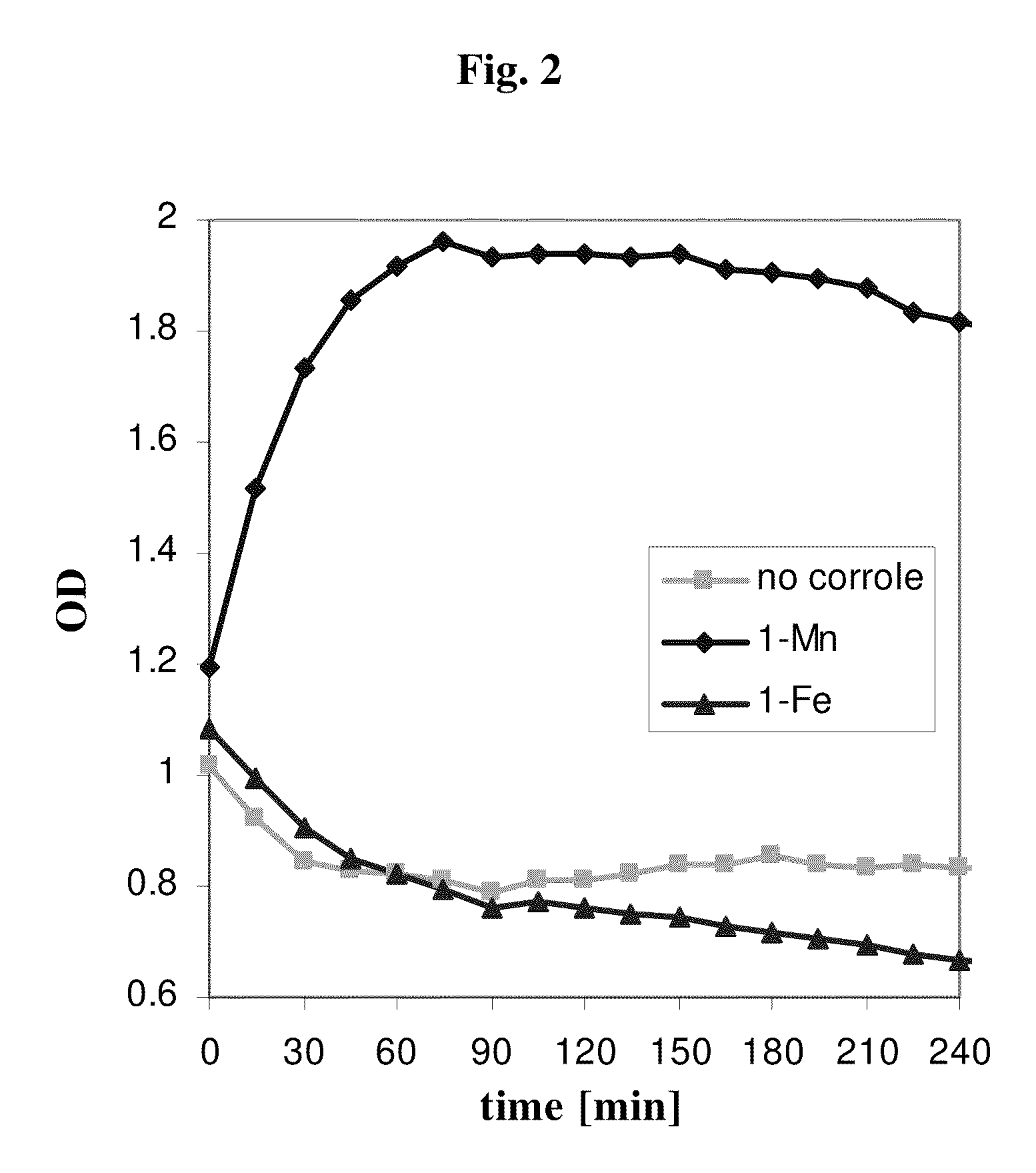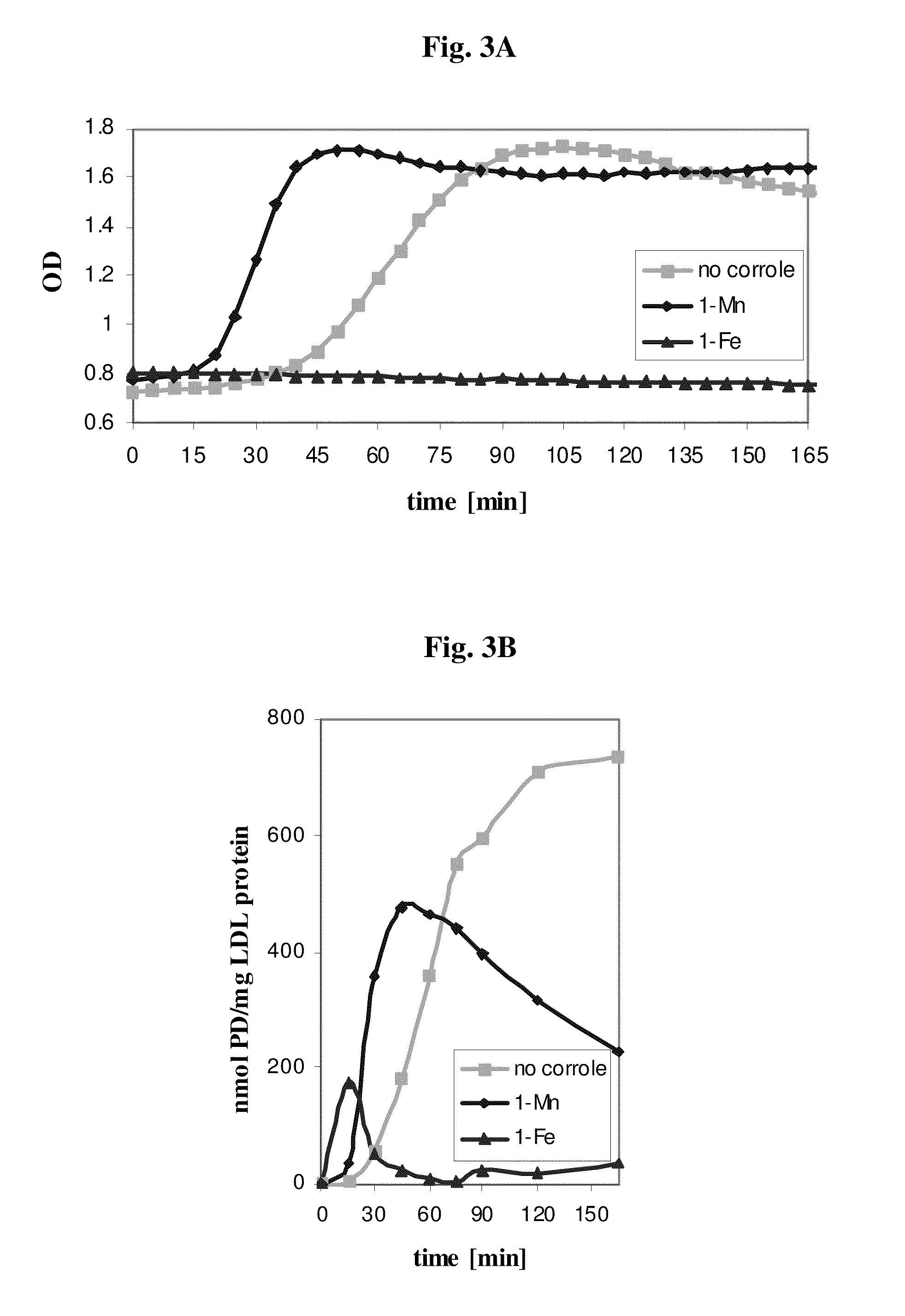Transition metal complexes of corroles for preventing cardiovascular diseases or disorders
a technology of transition metal complexes and corroles, which is applied in the direction of biocide, plant growth regulators, functional group formation/introduction, etc., can solve the problems of heart attack or stroke, complex synthesis of corroles, and less known corroles, etc., to achieve high selectivity, affect cholesterol level, and high potency
- Summary
- Abstract
- Description
- Claims
- Application Information
AI Technical Summary
Benefits of technology
Problems solved by technology
Method used
Image
Examples
example 1
The Corrole Metal Complexes Prevent Oxidation and Nitration of Small Molecules by ROS and RNS
[0114]Table 1 summarizes the results obtained by treating five different molecules with peroxynitrite, with and without catalytic amounts of 1-Fe or 1-Mn. These particular molecules were specifically chosen because they represent targets of hydroxyl radical, nitrogen dioxide, and of oxygen transfer reagents. In addition, their reaction products are easily identified and quantified by established methods.
[0115]
TABLE 1Oxidation of small molecules by peroxynitrite (PN).PNPN + 1-MnPN + 1-Fe(•OH)1)DMSO Formaldehyde11.5%0%0%2)Deoxyribose Malonyldialdehyde 1.7%0%0%(+NO2)3)Fluorescein Nitrofluorescein 30%(a)0% 4%(a)4)L-Tyrosine L-Nitrotyrosine 11%0%11% (O)5)Tetramethylenesulfoxide Sulfolane3.14%0.18% 0.1% 83%(b)0.6%(b)0.4%(b)pH 7.4, T= 25° C., the yeilds relative to [PN]0.(a)Relative to [fluorescein]0(b)pH 12.7
[0116]The results were very illuminative: both complexes rescued the simple molecul...
example 2
Comparison of the Ability to Decompose Peroxynitrite of the Corrole Metal Complexes with the Punicalagin
[0119]For initial assessment of possible superiority of the metallocorroles relative to natural antioxidants, we have determined the effect of excess (45-135 μM) punicalagin—the active polyphenolic hydrolysable tannin ingredient of pomegranate juice (Tzulker et al., 2007), on decomposition of peroxynitrite (40 μM). This information, together with the previously determined rate constants for catalytic decomposition of peroxynitrite (385 μM) by 1-Fe and 1-Mn (5-20 μM) (Scheme 2) (Mahammed et al., 2006; Gershman et al., 2007), were used for calculating the minimal concentrations required for reducing the half lifetime of peroxynitrite by 50%. The results revealed that 250 mol % punicalagin, 2.5 mol % 1-Mn, and 0.05 mol % 1-Fe are needed for that purpose, i.e., that the catalytically acting 1-Fe and 1-Mn are 5000 and 100 times, respectively, more effective than the most potent dietary...
example 3
The Corrole Metal Complexes Bind Preferably to Lipoproteins, Mainly to HDL
[0120]Possible interactions between the corroles and LDL were investigated prior to the examinations of the effect of the corroles on LDL oxidation. This was performed by recording the absorbance spectrum of 10 μM aqueous corrole solutions before and after addition of 100 mg of LDL protein / L (corresponding to a molar concentration of 0.2 μM). Large changes were induced upon the addition of LDL, with the most significant changes being shifts of absorbance maxima from 480 to 475 nm for 1-Mn, from 404 to 410 nm for 1-Fe, and from 424 to 428 nm for 1-Ga (which serves as a control for the two other corroles). These solutions ([LDL] / [corrole]=50) were dialyzed, and the absorbance after dialysis decreased by 20, 10 and 30% for 1-Mn, 1-Fe and 1-Ga respectively, leading to the conclusion that each LDL particle binds 40±5 corrole molecules with high affinity. This large number is quite reasonable since the LDL particle ...
PUM
| Property | Measurement | Unit |
|---|---|---|
| temperature | aaaaa | aaaaa |
| pH | aaaaa | aaaaa |
| pH | aaaaa | aaaaa |
Abstract
Description
Claims
Application Information
 Login to View More
Login to View More - R&D
- Intellectual Property
- Life Sciences
- Materials
- Tech Scout
- Unparalleled Data Quality
- Higher Quality Content
- 60% Fewer Hallucinations
Browse by: Latest US Patents, China's latest patents, Technical Efficacy Thesaurus, Application Domain, Technology Topic, Popular Technical Reports.
© 2025 PatSnap. All rights reserved.Legal|Privacy policy|Modern Slavery Act Transparency Statement|Sitemap|About US| Contact US: help@patsnap.com



